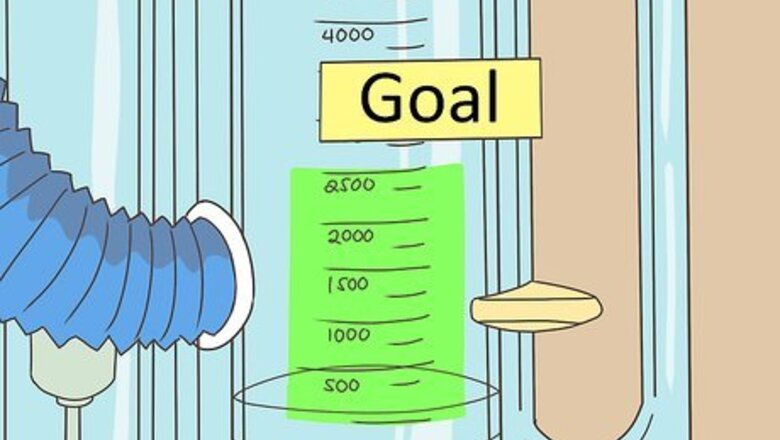
views
X
Expert Source
Ni-Cheng Liang, MDBoard Certified Pulmonologist
Expert Interview. 18 June 2021.
Proper usage may speed up your total recovery time while reducing your risk of developing pneumonia or other breathing problems.
Setting Up

Verify the desired goal. When using the Voldyne 5000 under the care of a doctor, nurse, or respiratory therapist, this healthcare professional will typically have a goal a mind. The Voldyne 5000 has a goal range between 250 and 2500 ml, so your goal should fall somewhere within this range. These numbers indicate the amount of air volume your lungs are able to intake. While it's usually best to begin the procedure with a volume goal in mind, it isn't strictly necessary for the first use. You should still use your results from each use to adjust your goal later on, though.
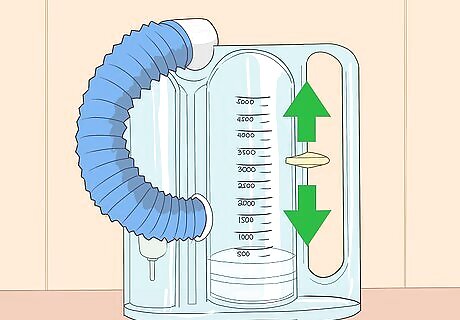
Set the pointer. Look for the yellow marker tab on the side of the large graduated column. Move the tab up or down until it rests at the position labeled with your desired goal. If you do not have a goal during your first use, you do not need to set the pointer to any measurement yet. You will need to use the pointer later on, though.
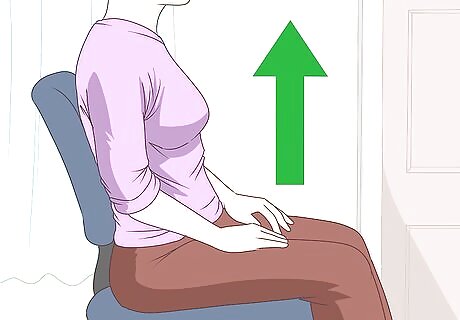
Sit up straight. Move to the end of your bed or chair and sit up straight. If desired, you could lean slightly forward, but you should not allow yourself to slouch or slump over. Similarly, you should not allow your head to tilt backward, either. If you cannot move to the edge of your bed, you should at least sit up as far as possible while sitting in bed. When using an adjustable hospital bed, you may use the controls to raise the head of your bed to assist you as you sit.
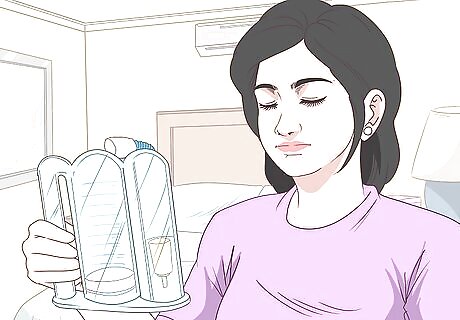
Hold the Voldyne 5000 in an upright position. Keep the device in an upright position with all labels facing you. Keep the device as level as possible so that the procedure will work correctly and all readings will be accurate. You should have a clear view of the marker tab, goal piston, and main piston. Note that the goal piston is the yellow cylinder resting beneath the "Good, Better, Best" label at the side of the device and the main piston is the large white disc at the bottom of the large cylinder.
Using the Voldyne 5000
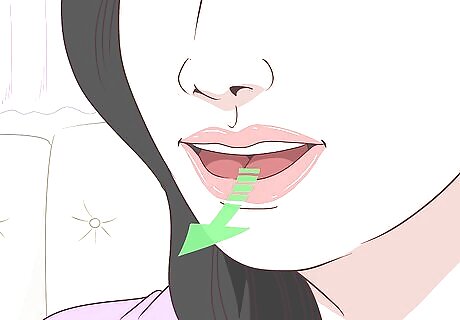
Exhale. Breathe out naturally, expelling as much air from your lungs as possible. Exhale through your mouth instead of your nose to push out more air at a quicker pace. A complete exhale is important. If you only exhale partially, you won't be able to inhale as deeply as you would with emptied lungs, making it more difficult to reach your goal point or obtain accurate results.
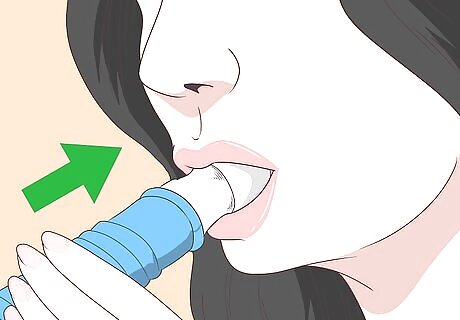
Place the mouthpiece in your mouth. Firmly press your lips around the mouthpiece to create a tight seal. Reposition your tongue as needed to make sure that it does not block the mouthpiece and hinder usage. You must create and maintain a tight seal with your lips. Otherwise, some of the air you inhale will come from outside the Voldyne 5000, and the resulting measurement will be lower than it should be.
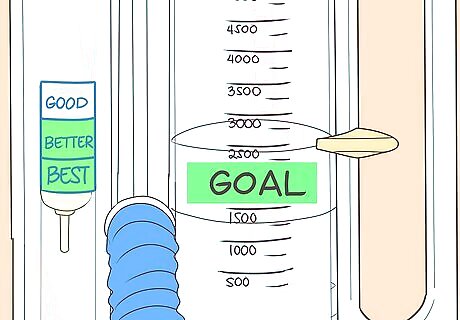
Inhale slowly. Take a deep, slow breath. Continue breathing in until you either reach your marked goal or are no longer able to inhale further. If you're maintaining an adequately tight seal with your lips, this inhale should seem similar to the feeling of drinking a thick liquid through a small straw. Watch the goal piston as it bounces between "Good," "Better," and "Best." This indicator measures the speed of your inhale, and a slower inhale will create a better reading. Try to keep it within the "Better" and "Best" ranges. Inhaling slowly gives the air sacs in your lungs more time to open, which will make it easier to get a deeper breath. Watch the main piston, as well. Try to make this piston reach the goal marked by the yellow pointer. You can allow the piston to rise higher, but you should not try to force it.
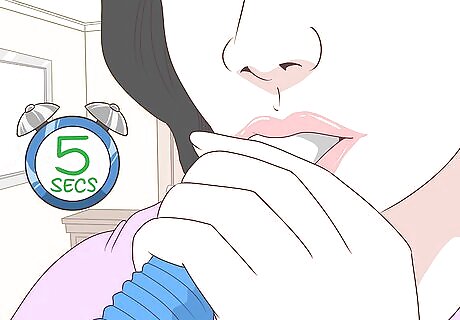
Hold your breath for 3 to 5 seconds. Once you've finished inhaling, pause and hold your breath for a minimum of 3 seconds. Watch the main piston as you hold your breath. It should gradually drop back down to bottom or "zero" position. Once it does, you can proceed to the next step.
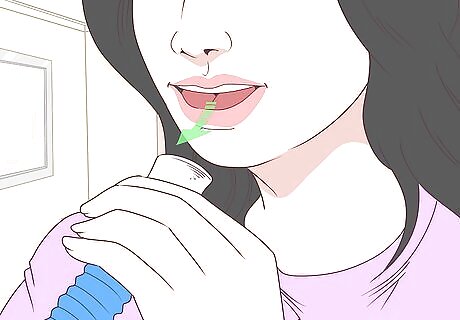
Exhale normally. Take the mouthpiece out of your mouth and breathe out at a normal, comfortable pace. As before, try to expel all of the air from your lungs on this exhale. If you feel winded or if your lungs are otherwise tired, take a few normal breaths before continuing to the next step. You should still end on an exhale before advancing, though.
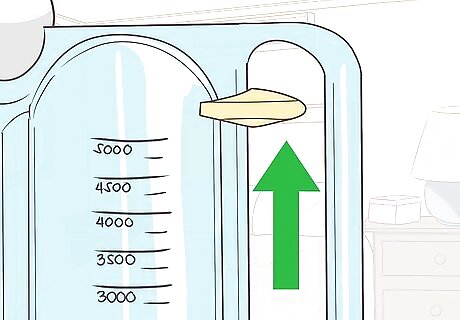
Reset the indicator. Unless you are told otherwise by your nurse or respiratory therapist, you should move the plastic indicator to the highest point you reached during the procedure. This allows you to adjust your goal based on your lungs' current abilities. When repeating this exercise, make your adjusted mark your new goal.
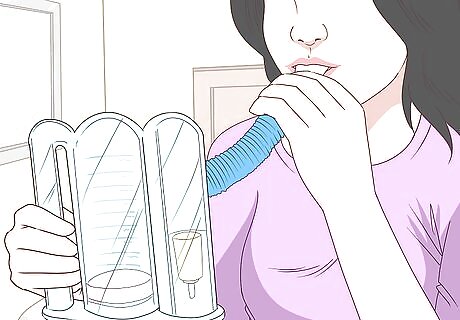
Repeat as directed. Repeat this procedure as directed by your healthcare provider. Typically, you should follow the procedure 10 to 15 times during each sitting. If your nurse or therapist did not assign a set number of repeats, aim for at least 10. You can do more, but stop if you feel lightheaded, dizzy, or too exhausted to continue. Do not attempt to rush through the process. Work through it gradually and breathe normally in between each repeat. If you feel lightheaded or dizzy, pause for a greater amount of time between repeats. Adjust the yellow goal marker each time you complete the procedure, but only make an adjustment if you reach a higher goal point. Do not adjust the pointer to a lower position unless your doctor, nurse, or therapist instructs you to do so.
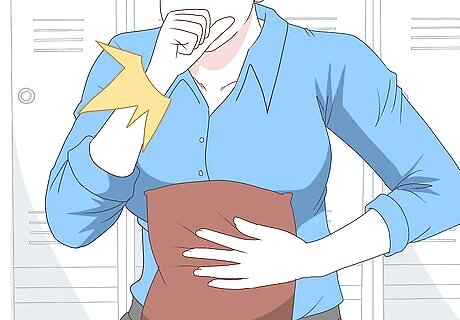
Cough. After you finish the full procedure, breathe deeply and cough two or three times. Coughing should help clear the mucus from your lungs, making it easier for you to breathe. If you had surgery on your chest or stomach, or if you feel pain while you cough, hold a pillow or folded blanket firmly against your chest while coughing. Applying pressure to the site of the incision in this manner should support the area and reduce the amount of pain you feel.
Continuing Therapy

Clean after each use. Thoroughly clean the mouthpiece with soap and water after each use. Rinse well and dry with clean paper towels. If desired, you could clean the mouthpiece with an antiseptic mouth rinse instead of using soap and water. When using soap and water, however, you must make sure to rinse away all soap before using the spirometer again. On the Voldyne 5000, the standard mouthpiece is meant to be a permanent one. Use this mouthpiece each time you use the device. If you switch to a disposable mouthpiece, though, you should not use the same one for more than 24 hours.
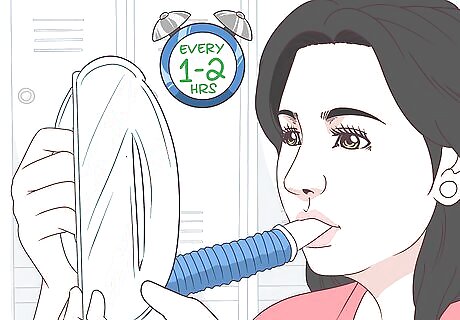
Repeat the procedure throughout the day. You will need to use the device in the same manner every one to two hours, or as directed by your nurse, doctor, or respiratory therapist. Note that in most cases, however, you should only follow this schedule during your normal waking hours. Your body needs adequate rest to make a full recovery, so you shouldn't wake yourself up in the middle of the night to repeat the exercise.
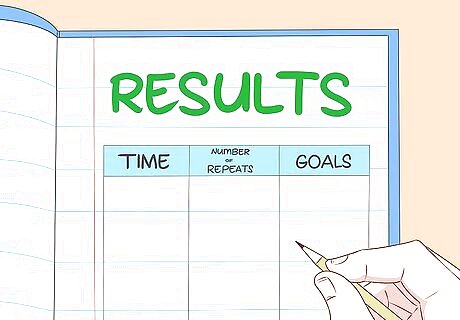
Keep a record of your results. While not strictly necessary, it's a good idea to keep a log indicating your results. This log should contain an entry for each time you use the Voldyne 5000. For each entry, mark down the time of day, the number of repeats you performed, and the volume amount you managed to reach. The purpose of this record is monitor the progress made by your lungs, and to keep track of any increases or decreases to the functional abilities of your lungs. Your healthcare provider might keep a similar record, but you should still keep your own so that you can keep track of your progress yourself.
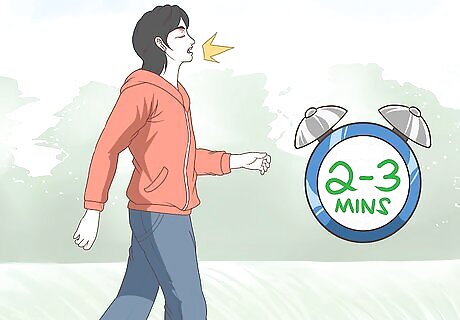
Walk around. When you are well enough to safely get out of bed and move around on your own, practice walking around in between uses. While walking, breathe deeply and cough two or three times. Practicing the cough while you walk can clear your lungs more thoroughly and make it even easier to breathe.
















Comments
0 comment